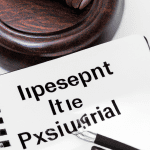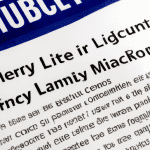Oklahoma Marijuana Overdoses
With the legalization of marijuana for medical use, the Sooner State of Oklahoma has seen a rise in the number of cases of accidental marijuana consumption – particularly among children. Since the legalization in 2018, many young
Oklahomans have gotten very sick after unknowingly ingesting marijuana edibles [[1](https://www.ncbi.nlm.nih.gov/books/NBK482175/)]. The Oklahoma Bureau of Narcotics & Dangerous Drugs Control estimates that edibles are the main cause of accidental marijuana overdose cases in Oklahoma [[2](https://www.enidnews.com/news/edibles-main-cause-of-state-marijuana-overdoses/article_5fa3439c-2837-11ee-9639-07707b131c60.html)]. Even more
frightening, many of these cases involve young children, as the marijuana edibles are sometimes made in colorful shapes and sizes, bringing an added danger of accidental ingestion [[3](https://www.fox23.com/news/fox23-investigates/oklahoma-sees-uptick-of-accidental-marijuana-consumption-among-
kids-under-5/article_29b399b9-b68b-54ca-9f2c-45abb69162c5.html)]. With the alarming rate of accidental marijuana use in Oklahoma, let’s take a closer look at the inconsistencies in state laws that could potentially be causing this rise in cases.

Table of Contents
- 1. Introduction to Edibles as Main Cause of Oklahoma Marijuana Overdoses
- 2. Legislation and the Rise of Edible Marijuana in Oklahoma
- 3. Evidence-Based Insights on the Effects of Marijuana Consumption
- 4. Prevention Strategies to Reduce Overdoses and Accidental consumption of Edibles
- Q&A
1. Introduction to Edibles as Main Cause of Oklahoma Marijuana Overdoses
Edibles are becoming an increasingly popular form of cannabis among those looking to enjoy it medicinally or recreationally. In Oklahoma, the surge in popularity of edibles has led to an uptick in the number of accidental overdosing. In fact, according to Oklahoma Watch, almost half of all marijuana-related
overdoses in the state since 2018 have involved edibles, with a particularly high occurrence of these incidents involving children under the age of 6 [[1](https://www.tahlequahdailypress.com/news/oklahoma-watch-edibles-are-main-cause-of-
oklahoma-marijuana-overdoses-accidental-consumption/article_49edf0be-2810-11ee-8fa6-e343907d0ab1.html)]. This significant rise of edibles-related overdoses emphasizes the importance of knowing the potential risks involved with these products.
It is paramount to educate both consumers and producers on the effects of these enticingly packaged snacks that – while innocuous enough in appearance – might
contain dangerous amounts of cannabis. This is the responsibility of both those who purchase edibles as well as those who are creating them, as the Ponca City News notes [[2](https://www.poncacitynews.com/news/edibles-are-main-cause-oklahoma-marijuana-overdoses-accidental-consumption)]. Unaware users may be unaware of the
potency of edibles, the potential side-effects, and the consequences of over-consumption especially in children. Therefore, education must be provided on the health effects and potential addiction associated with cannabis-infused edibles, such as the effects on brain development and respiratory functioning [[3](https://www.ncbi.nlm.nih.gov/pmc/articles/PMC5260817/)].
Ultimately, as the popularity of edibles continues to grow, it is critical to stay aware of the risks associated with them, in order to help people make informed decisions about their cannabis consumption. Understanding the dangers of edibles can help to avoid accidental overdoses in Oklahoma.

2. Legislation and the Rise of Edible Marijuana in Oklahoma
As of August 1, 2023, Oklahoma legalized medical marijuana and put restrictions on THC content in edibles and for minors. Oklahoma Cannabis Laws are significantly strict with only medical use being allowed.
Impact on edibles has been rising since then. The Senate Bills 440 and 434 are the main contributors to this change. SB 440 sets allowable limits for THC content
in edibles and for medical marijuana for minors; whereas SB 439 puts additional restrictions on marijuana consumption and possession.
The regulations have led to the rise of edible marijuana products in the state:
- Cannabis-infused foods
- Confectioneries and baked goods
- Herbs, teas, and beverages
- Oil infusions and tinctures
- Vaporizers and concentrates
With the regulations set out by the Oklahoma Cannabis Laws, consumers can rest assured that they have access to safe and oil-sheet pharmaceutical grade
products. Nonetheless, users should always be wary of the quality and strength of edibles. As [[3](https://flowhub.com/oklahoma-cannabis-laws)] states, it is highly advised that users always keep track of the strength and amount of THC that they are consuming.
3. Evidence-Based Insights on the Effects of Marijuana Consumption
- Cognitive Impairment
Based on the research presented in [[3](https://neurosciencenews.com/cannabis-cognition-19945/)], cannabis use has been linked to acute cognitive impairments. Short-term memory, decision-making processes, and learning abilities may all be - negatively impacted by marijuana consumption. Although this is more associated with higher concentrations of THC, larger studies are needed to more accurately evaluate the correlation between marijuana use and cognitive impairment.
- Route of Consumption
By examining [[1](https://gradesfixer.com/free-essay-examples/marijuana/)], it is shown that consuming marijuana in certain ways can lead to increased levels of - concerns. Depending on the form of ingestion, THC content, and the dose, the effects of marijuana consumption could be more serious.
4. Prevention Strategies to Reduce Overdoses and Accidental consumption of Edibles
Marijuana Laws
As discussed in [[1](https://injepijournal.biomedcentral.com/articles/10.1186/s40621-019-0213-z)], states are imposing marijuana laws with the intention of reducing opioid overdose mortality. Care must be taken to ensure that these regulations are not too
restrictive, as it is possible to increase the risk of overdose by making access to medications, medications prescribed by a physician, and other pain management strategies limited or unavailable.
Intervention Strategies
Intervention strategies that can be used to reduce overdoses and accidental consumption of edibles are:
- Educational programs to ensure proper safe dosage for recreational and therapeutic use.
- Increasing access to treatments for people with substance abuse disorders.
- Engagement in more aggressive public health initiatives focused on substance use disorder prevention and early intervention.
- Providing naloxone kits to reduce overdose fatalities.
Additional prevention strategies also can include proactive harm reduction tactics
such as [[2](https://twitter.com/DrGupta46)] advocating for safe consumption sites to provide a safe environment for people with substance abuse disorders [[3](https://www.baltimoresun.com/opinion/editorial/bs-ed-0221-heroin-safe-consumption-site-20190219-story.html)]. Such sites can help to provide access to sterile equipment, overdose education, and medical monitoring.
Q&AOklahoma Marijuana Overdoses
Q: What is Oklahoma’s Medical Marijuana Authority? Oklahoma Marijuana Overdoses
A: The Oklahoma Medical Marijuana Authority (OMMA) is a state agency tasked with regulating the medical marijuana industry in Oklahoma. It ensures the safety of medical marijuana through regulations such as seed-to-sale inventory tracking with Metrc, [[1](https://oklahoma.gov/omma.html)].
Q: What kind of information is available on Twitter related to cannabis edibles?
A: There has recently been a surge in tweets related to cannabis edibles on Twitter. Most tweets are either positive or negative in sentiment, as coded in an exploration of tweets in the U.S. [[2] Oklahoma Marijuana
Overdoses(https://www.ncbi.nlm.nih.gov/pmc/articles/PMC4893972/)]. However, there are also neutral tweets which do not contain enough information to be labeled positive or negative.
Q: What is the primary cause of marijuana overdoses in Oklahoma?
A: In Oklahoma, edibles are the primary cause of marijuana overdoses and
accidental consumption. This is because edibles are often combined with food, increasing the amount of THC (tetrahydrocannabinol) that is consumed, causing an increase in marijuana intoxication [[3] Oklahoma Marijuana Overdoses (https://www.childrenscolorado.org/conditions-and-advice/conditions-and-symptoms/conditions/acute-marijuana-intoxication/)].
In short, the conclusion of this article is clear. Edibles are the main cause of marijuana overdoses and accidental consumption in Oklahoma. What remains to be seen is whether or not Oklahoma lawmakers will take measures to ensure that these incidents continue to decrease. [[1](https://oklahoma.gov/omma.html)] and [[2](https://www.ojp.gov/pdffiles1/ojp/183152.pdf)] can provide updated
information on the steps being taken to protect against marijuana overdoses in Oklahoma, and [[3](https://oklahomawatch.org/2023/03/08/after-sq-820-loss-marijuana-related-justice-reform-shifts-to-legislature/)] can provide insight into the justice system reforms that may help to protect the state from accidental marijuana consumption. No matter what measures, if any, are taken, one thing is certain: the problem of marijuana overdoses in Oklahoma is one that needs to be monitored and taken seriously.


